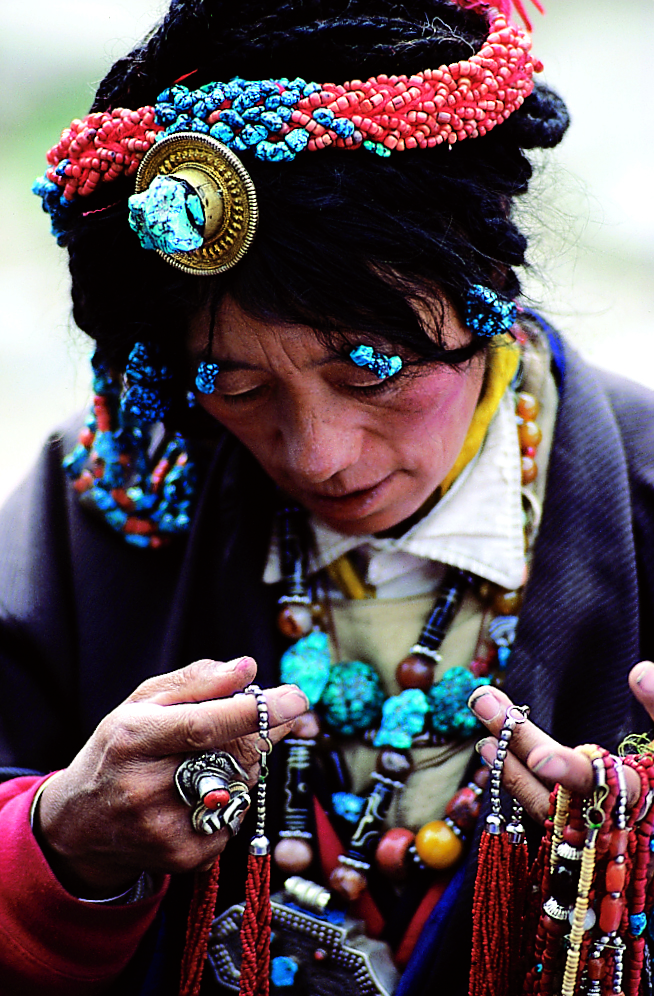By Kris Madden
 Tales of magic and mystery have long attracted visitors to Tibet, and despite its challenges, the allure of this once forbidden land remains strong for the adventurous, cultural and spiritually-inclined traveller. I’m about to board the T27 train at West Beijing Station for the 3760 kilometre, 44 hour journey to Lhasa.
Tales of magic and mystery have long attracted visitors to Tibet, and despite its challenges, the allure of this once forbidden land remains strong for the adventurous, cultural and spiritually-inclined traveller. I’m about to board the T27 train at West Beijing Station for the 3760 kilometre, 44 hour journey to Lhasa.
There are three classes in each carriage: soft sleeper, hard sleeper and hard seat.
My advice would be to always book your clients in soft sleeper – but even though this is the highest grade of accommodation, the bunks beds (two upper and two lower) still sleep four people per compartment, and are often shared with strangers.
It’s a little bit of a squeeze, but quite comfortable, as far as train travel in China goes. Travelling by train in China does require a sense of adventure. For a start, most are not equipped with Western-style toilets, facilities can be basic, and because most locals travel this way, the train can become quite cramped.
The main advantages of travelling to the capital of Tibet this way are that you get a real feeling for just how vast the country is; you experience some of the world’s most unbelievable scenery; and most importantly, it allows you to slowly adapt to the high altitude conditions, as opposed to the sudden shift if you were to fly.
More than 80 per cent of the railway is higher than 4000 metres – the highest point is a lofty 5072 metres above sea level – almost as high as Everest Base Camp. As if that isn’t impressive enough, the Qinghai-Tibet railway holds nine world records, including highest railway in the world; highest train station (Tanggula Station, at 5068 metres above sea level) and highest railway tunnel (the 1.3-kilometre Fenghuoshan tunnel, at 4905 metres).
As we pass Golmud, 33 hours later, and approach the Qinghai-Tibet Plateau, a whooshing sound comes from a small vent in the wall, pumping oxygen-enriched air through the carriages. This is a safeguard against altitude sickness, a real threat to travellers in these areas. Those with medical conditions should seek their doctor’s advice before travelling.
The closer we get to Lhasa, the more Tibetan our surroundings become. There are prayer flags strung across fast-flowing glacial rivers and streaming colourfully down steep hillsides; people are harvesting barley or hand-ploughing their fields.
Known as the ‘Roof of the World’, Tibet is a barren wind-swept land of yak-herders, red-robed lamas, nomadic pilgrims and women with waist-long plaited hair wearing extraordinary amounts of turquoise jewellery.
Lhasa, the world’s highest city, is not for the faint-hearted. Translating as ‘Abode of the Gods’, it is literally, breath-taking.
Once we’ve acclimatised to the altitude, we venture through the old town, a labyrinth of crowded streets and noisy bazaars that reveals typical Tibetan city life. The city’s public plaza, Barkhor Square, is home to the Jokhang Temple. Built in 642, it’s considered the most sacred and spiritual temple in Tibet. If there is one thing Tibet is not short on, it’s temples. It’s one of the main reasons why people visit.
We watch the pilgrims, who have travelled from far and wide, walk in a counter-clockwise direction around the square, complete with goats, chickens, and laden with knapsacks you wouldn’t even attempt to carry.
The towering Potala Palace, former home of the Dalai Lama, and once the seat of the Tibetan government, is a now a UNESCO World Heritage site, home to precious relics. On a clear day, the view of the Himalayas from the top is magical. Norbulingka, the Dalai Lama’s summer palace, is not quite as spectacular as the Potala Palace, but also holds a great deal of significance.
On weekday afternoons, the monks at Sera Monastery participate in philosophical debates and tourists are welcome to find a spot and watch. It’s an entertaining battle of spiritual prowess not to be missed.
There’s no doubt that travel can be challenging in Tibet – rules about access can change in a heartbeat, and if your permits are not perfect to the letter, you can find yourself hightailing it back to Beijing.
However, the ‘Roof of the World’ is unlike anywhere else on earth, and most travellers agree, any minor discomforts are well worth it.


